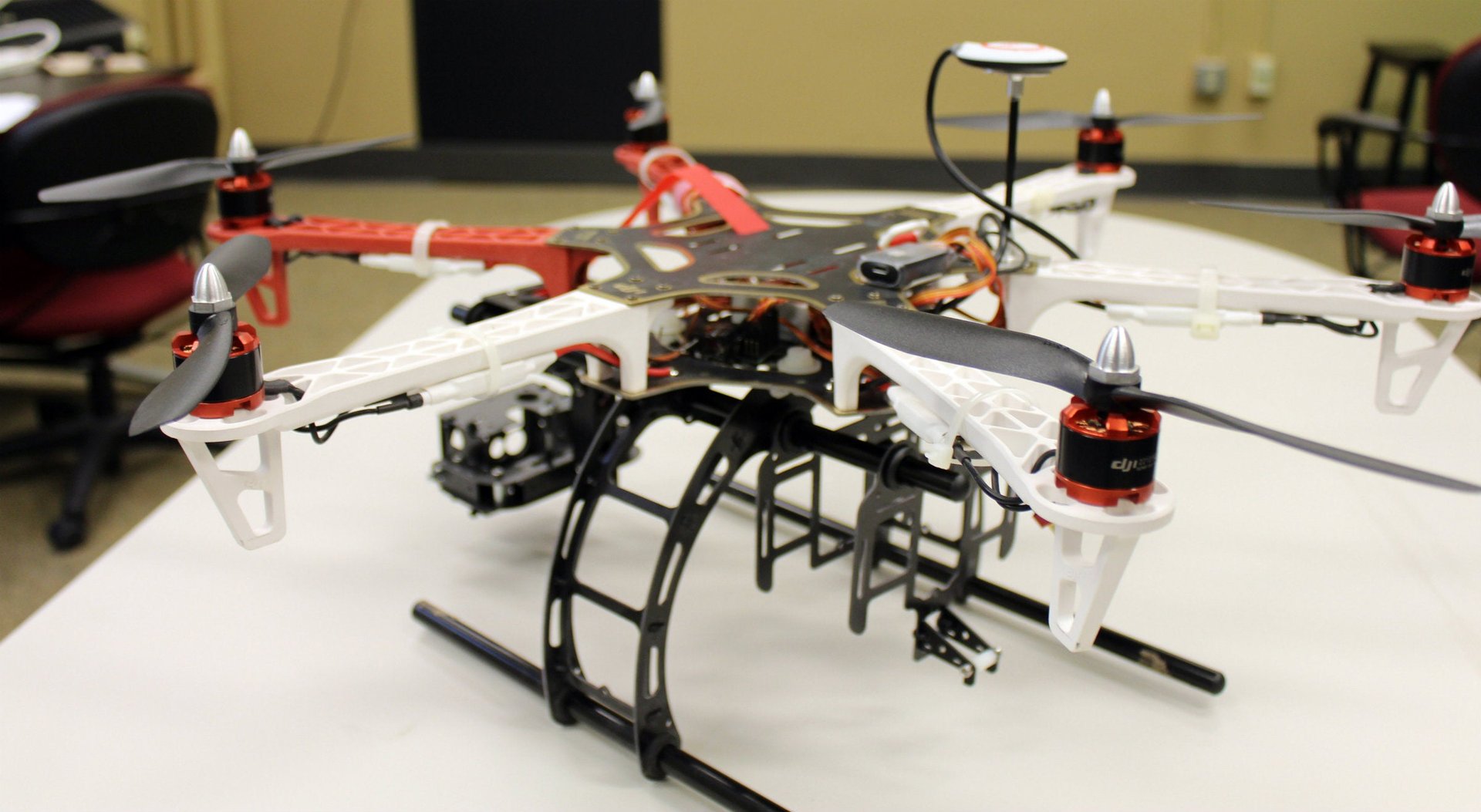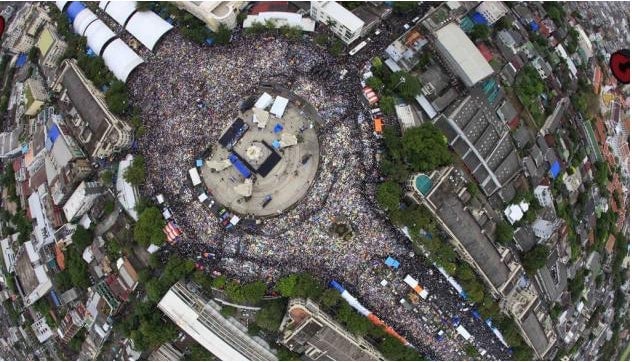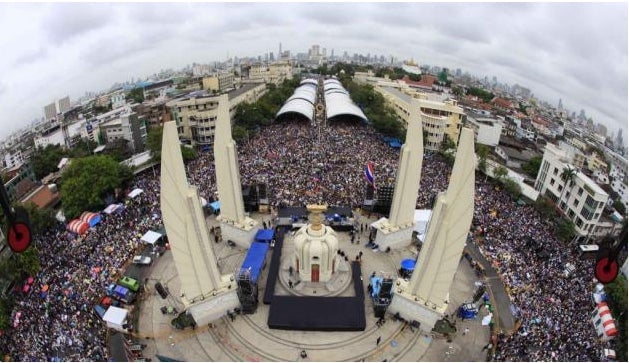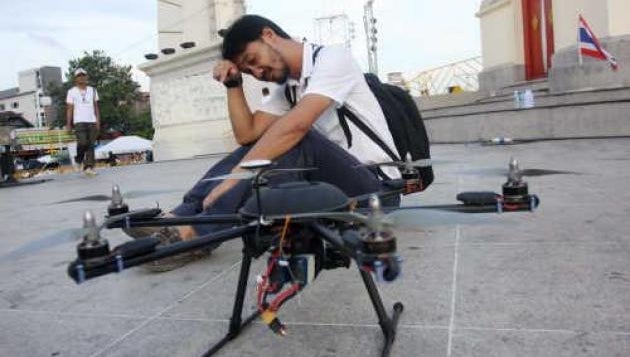Bangkok’s unlikely embrace of drone journalism shows the extent of the government’s problems
Thai newspapers covering ongoing protests in Bangkok have adopted a new reporting tool in recent weeks: small, camera-equipped helicopters they’re using to capture images of massive crowds.


Thai newspapers covering ongoing protests in Bangkok have adopted a new reporting tool in recent weeks: small, camera-equipped helicopters they’re using to capture images of massive crowds.
Large political protests are nothing new to Thailand. Waves of demonstrators have taken to the streets in recent years, both to support and denounce controversial former prime minister Thaksin Shinawatra and his allies. Thaksin was overthrown in a military coup in 2006; yesterday as many as 100,000 protesters rallied in the biggest demonstration since 2010 to demand the ouster of his sister, Prime Minister Yingluck Shinawatra. Today crowds of demonstrators even forced their way into the Finance Ministry.
The media coverage of Thailand’s various political upheavals has remained conventional since Thaksin left office, with traditional accounts filling newspapers and breathless reports broadcast on the country’s many partisan TV stations. But English language dailies The Nation and The Bangkok Post, among other papers, have been running aerial, panoramic photos of the demonstrators, providing a perspective on the rallies that has been been lacking until now. (The photos are used here with permission of The Nation.)


The Nation‘s Web site today, for example, features aerial images of a gathering yesterday in the Thai capital, as does The Bangkok Post‘s site. In The Nation‘s photo, above, people congregate at Bangkok’s Democracy Monument; one of the helicopter’s red wheels is visible in the upper right corner of the photo.
With protest organizers and authorities often at odds over the numbers of demonstrators such rallies attract, the images provide a clear portrait of events, with some using them to try to calculate crowd sizes on Twitter. The size of yesterday’s rally makes it the most significant since unrest hit the country in 2010, when masses of pro-Thaksin protesters clogged Bangkok’s streets over the course of two months, culminating in an army crackdown that killed 91 people.

The Nation says the helicopters and their cameras cost between about $2,500 and $6,200, and require one staff member to fly the contraption while another snaps the photos. While not exactly inexpensive, the drones are certainly cheaper than using standard helicopters. British blogger Richard Barrow, a long-time Thailand resident, has also written about deploying his recently acquired quadcopter to photograph the Thai countryside, and has even coined the Twitter hashtag, #ThaiDrone.
While the devices have been flown by Western news organizations and researchers in various countries, their use in Thailand is somewhat surprising given that the country’s media outlets are not known for their digital innovation. Most newspaper Web sites feature old-fashioned, clunky designs, and the Thai media’s overall reporting standards are seen to lag behind those of international media.
Reporters Without Borders ranks Thailand 135 out of 179 on its 2013 World Press Freedom Index due to government restrictions on the Internet and laws that make it illegal to insult the king or royal family. The ranking puts Thailand behind Zimbabwe, Libya, and Angola, but ahead of other Southeast Asian countries like Singapore and Myanmar. Still, while laws in the US and the United Kingdom restrict such drones’ operation, reporters are apparently flying them in Thailand without government obstruction—at least for now.